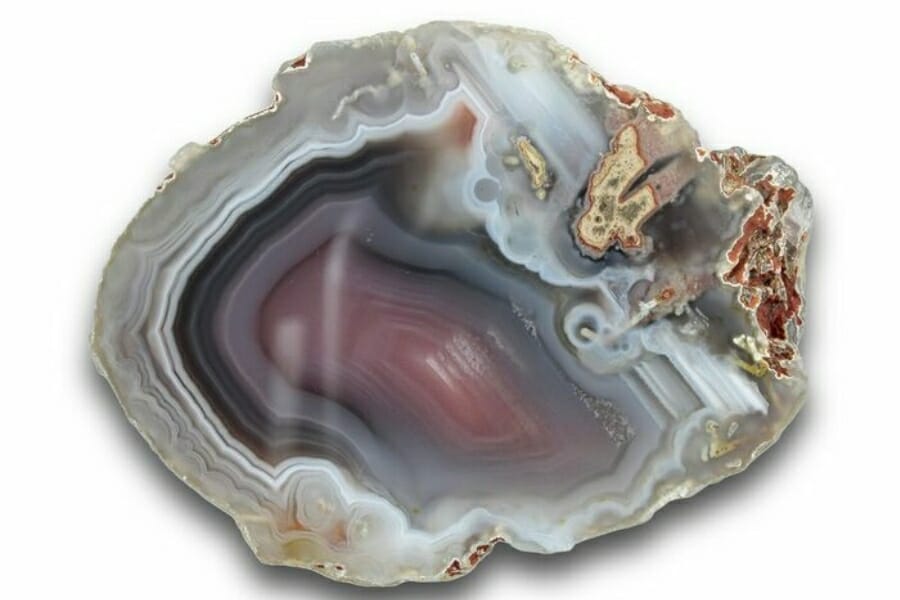Finding agate in Kansas can prove to be a challenging endeavor for those without proper guidance. The vast landscapes and diverse geological formations of the Sunflower State, while abundant in natural beauty and hidden gems, don’t always readily reveal their treasures to the untrained eye.
It’s not enough to know where to look; you also need to know the subtle signs of these semi-precious stones nearby. But the reward is undoubtedly amazing for those lucky enough to find an agate.
Even though Kansas might be complicated for people who have never looked for agates before, we’ve found a lot of great options and resources to help in the search.
Anyone who likes agates can find these geological wonders in the middle of America with the right tools, knowledge, and maybe some local knowledge.
What is Kansas Agate?
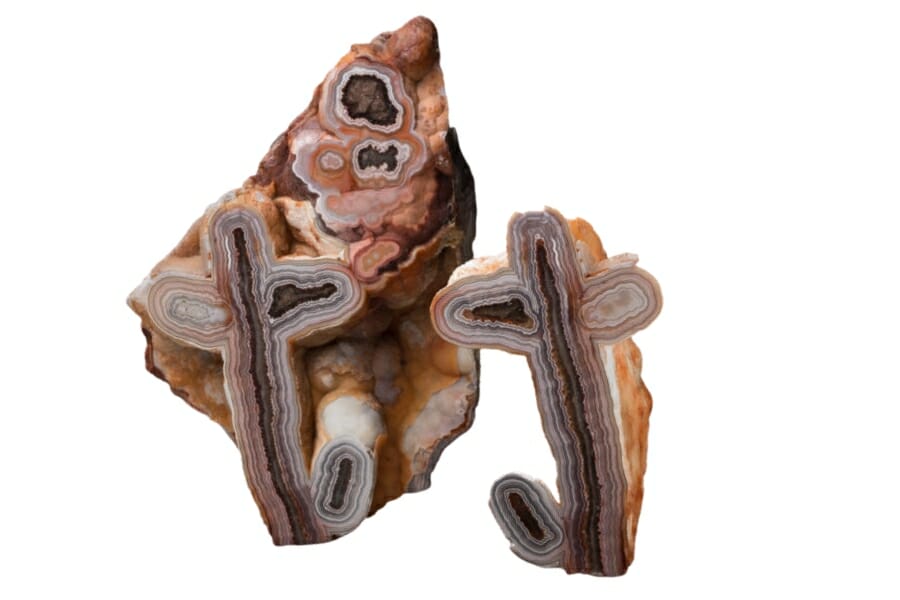
Agate is distinguished by its fine grain and often displays various colors in layers or bands, from transparent to opaque.
It shows how fantastic nature is with its intricate patterns, swirls of color, and mesmerizing transparency. Their formation has taken millions of years, and each stone is a unique and beautiful work of art.
Even though agates can be found worldwide, they are most often found in places with a lot of volcanic activity or where volcanic fluids have changed the rocks.
Check out our article to know the current price and value of agates.
Moss agates
Moss agate is a beautiful type of agate, but it does not contain moss. Instead, its name comes from its appearance: the mineral inclusions in the stone often look like delicate tree patterns or mossy scenes frozen in time.
Usually, manganese or iron is used to make these inclusions. They make dendritic patterns that look like plants growing inside the stone. Moss agates differ from other agates because they have branch-like inclusions that look like they are growing out of the clear or milky chalcedony background.
While Kansas has chert and other siliceous stones that may occasionally be mistaken for agates, genuine moss agates are rare in the region but still can be found.
Fire agates
Fire agate is a beautiful type of chalcedony that gets its name from how its colors change and look like the colors of flames. Unlike traditional agates, which have smooth bands, or moss agates, which have branching patterns, fire agates are made up of iron oxide or limonite layers.
Light refracts between these layers, creating a dazzling show of iridescent colors. The iridescent flashes give the stone its unique look. They can show various colors, from red and green to blue, purple, and gold.
Fire agates are not native to or commonly found in Kansas.
Blue lace agates
Blue lace agate gets its name from the delicate blue and white patterns that look like lace and give the stone a soft, relaxing look. This chalcedony stands out for its beautiful and soothing appearance, often reminiscent of softly cascading waters or delicate wisps of cloud against a clear sky.
It has bands and sometimes see-through layers of light blue, white, and even a hint of darker blue. Because of their unique color palette and intricate, lace-like patterns are often used for jewelry and decorative pieces.
Blue lace agate is not a naturally occurring stone in the state.
Lake Superior agates
Lake Superior agates stand out from other kinds because of their rich, bright colors and complicated banding patterns. About a billion years ago, volcanoes erupted in Lake Superior, in the Upper Midwest of the United States and Canada.
While Lake Superior agates primarily hail from the Upper Midwest, especially Minnesota, Wisconsin, and Michigan, their popularity among collectors means they can be found in collections and markets worldwide.
However, naturally occurring Lake Superior agates in Kansas would be pretty rare. Any specimens found in Kansas would likely have been transported there by human means, such as trading or personal collection, rather than natural processes.
The key factors in our recommendations are:
- The deep experience and understanding of our team about the area
- Recommendations from local groups and clubs
- How easy it is to get the a particular location
- Safety and potential hazards when collecting
- Weighing private and public locations
- The ability for both experienced and novice agate enthusiasts to find great samples
With these factors in mind we’ve been able to put together a fantastic list that just about anyone can use!
DON'T MISS OUT ON ANY GREAT FINDS!
While you're out searching for Agates you're going to find A LOT of other interesting rocks and minerals along the way. The last thing you want to do is toss out something really interesting or valuable. It can be easy to misidentify things without a little guidance.
We've put together a fantastic field guide that makes identifying 140 of the most interesting and valuable rocks and minerals you will find REALLY EASY. It's simple to use, really durable, and will allow you to identify just about any rock and mineral you come across. Make sure you bring it along on your hunt!
The Best Spots To Find Agates in Kansas
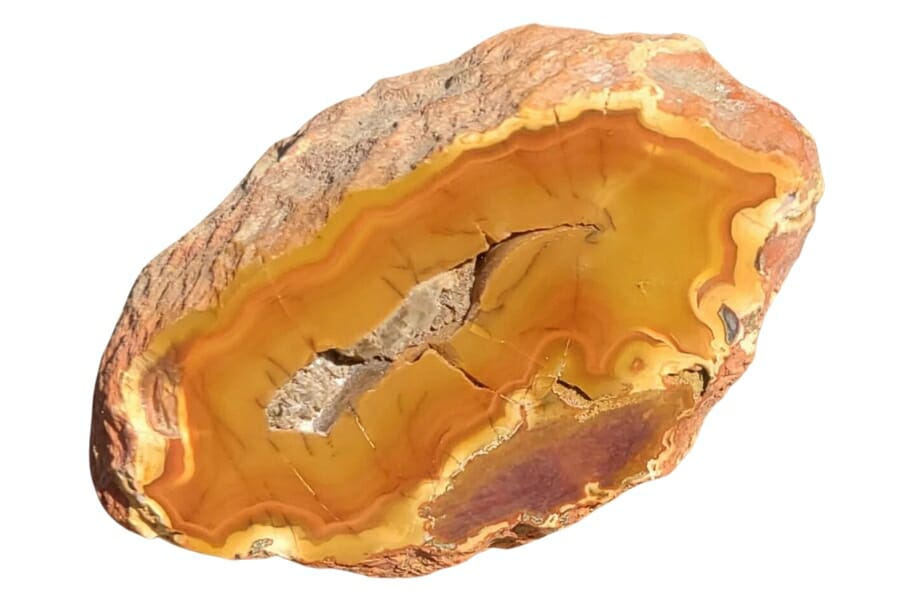
Here are our suggestions for places in the state where you can find agates. We also have a lot of interesting places to search for gems in Kansas, but not all of them are suitable for finding agates.
Always Confirm Access and Collection Rules!
Before heading out to any of the locations on our list you need to confirm access requirements and collection rules for both public and private locations directly with the location. We haven’t personally verified every location and the access requirements and collection rules often change without notice.
Many of the locations we mention will not allow collecting but are still great places for those who love to find beautiful rocks and minerals in the wild without keeping them. We also can’t guarantee you will find anything in these locations since they are constantly changing.
Always get updated information directly from the source ahead of time to ensure responsible rockhounding. If you want even more current options it’s always a good idea to contact local rock and mineral clubs and groups
Big Blue River
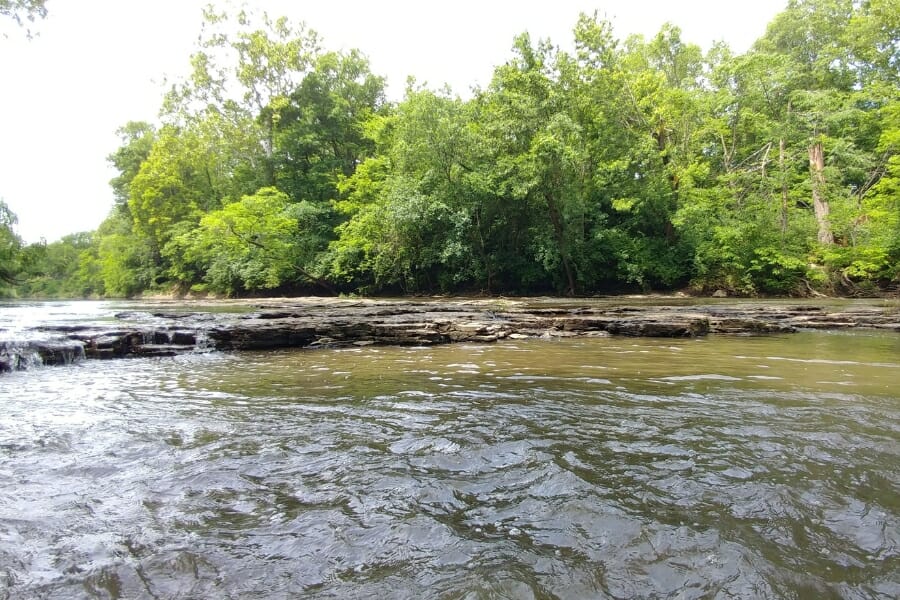
The Big Blue River is a branch of the Kansas River that runs through the northeastern part of Kansas for about 359 miles. The river starts in Nebraska and flows through Kansas, changing the landscape and adding nutrients to the soil.
Over time, the river has eroded and exposed many different rocks and minerals, making it a possible treasure trove for people looking for rocks and gems.
Collectors like the area because they might find agates there and because the area around the river is peaceful and beautiful. The river is an excellent place for people interested in agates because of its long history, varied geology, and ability to reveal hidden gems.
Before bringing your agate finds back home from Kansas, ensure you know the most up-to-date rules about collecting there.
Where we found agates in the Big Blue River
You can find agates along the river’s shores and in the riverbeds. The constant movement of the Big Blue River’s water over thousands of years has naturally smoothed and shown off these beautiful stones.
Chikaskia River
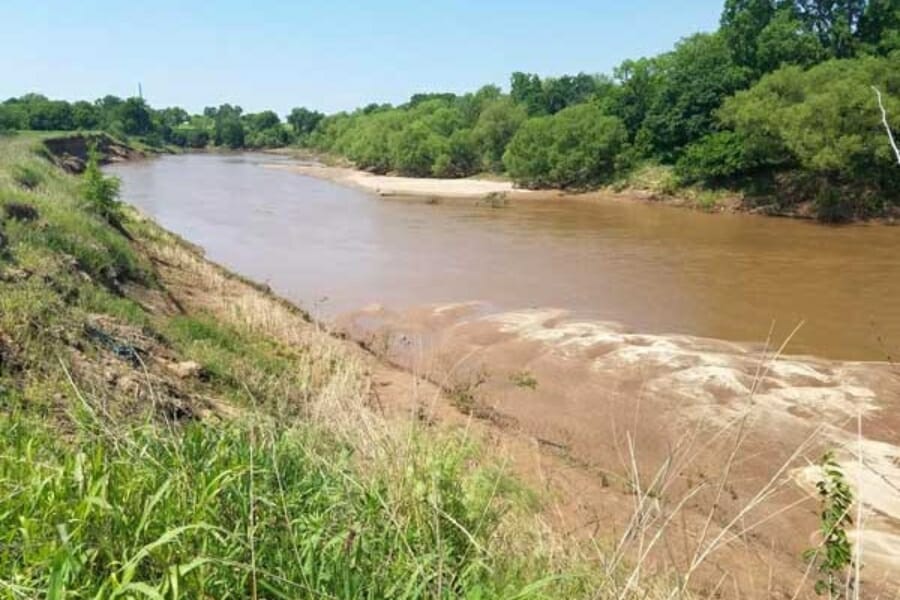
The Chikaskia River starts in Kansas and flows south into Oklahoma along a path about 159 miles long. As a unique waterway in Kansas, it has shaped the state’s landscape and played a big part in its geology and ecology.
Chalcedony occurs naturally in the area and often takes the form of agates. It can be found in pebbles, gravel, and other sedimentary deposits. The peaceful setting of the river, which is full of wildlife and interesting geological features, makes it more fun to look for these gems.
Where we found agates in the Chikaskia River
Often, the best places to begin are the exposed gravel bars in rivers. These areas contain a mixture of rocks and minerals transported by the river’s currents. These bars can yield new agate specimens after significant rainfall or when water levels are lower.
Republican River
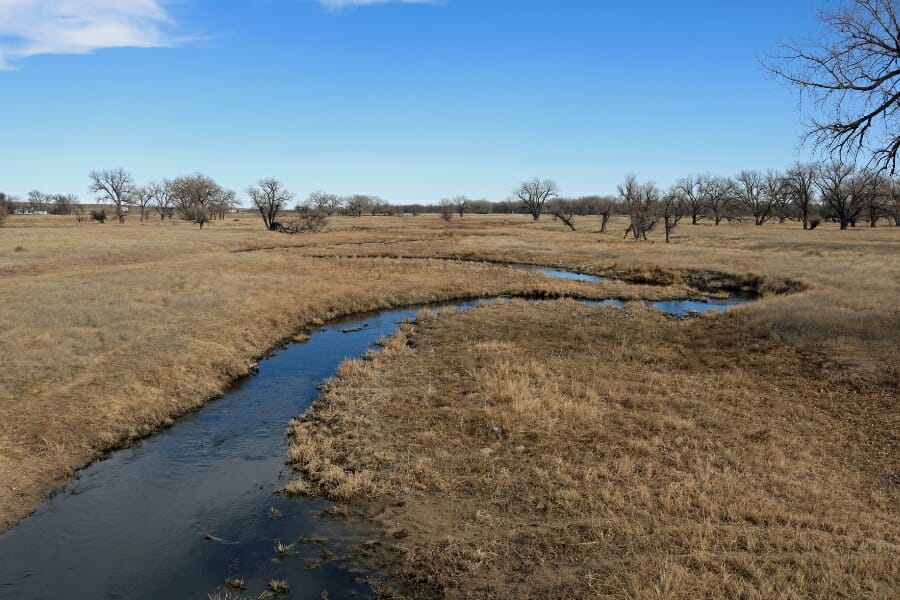
The Republican River is a significant waterway that starts in Nebraska and flows through northern Kansas. This river has had a big impact on the geology and ecology of the state. It has shaped the state’s landscape in many ways.
Over a long period, the river has acted as a natural sieve, eroding its banks and moving a wide range of rocks and minerals downstream. Agates are one of the geological treasures it shows. They often look like they have stripes on them.
The Republican River flows in a way that constantly changes the landscape, especially after it rains. The river attracts new and experienced collectors because of its long course and the chance of finding agates and other minerals.
Where we found agates in the Republican River
You can find these semi-precious stones in the river’s gravel bars, bends, and along its shores.
Saline River
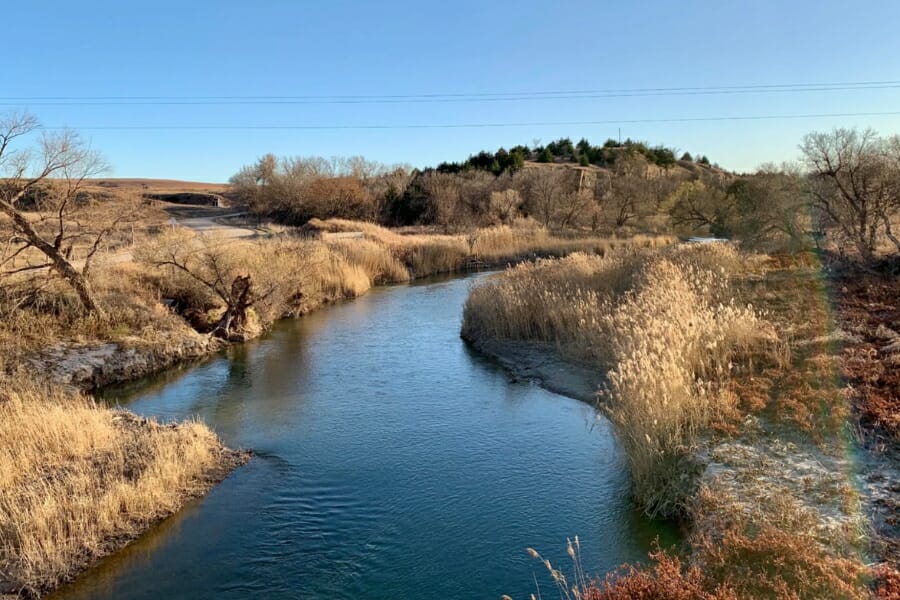
The Saline River runs through the middle of Kansas and is a key part of the state’s geological and hydrological story. With its long stretches of sparkling water, this river has been challenging at work for thousands of years, shaping the land and revealing mineral treasures that were once hidden.
When it rains, or the water level goes down, new sediment layers are exposed, making it easier to find agates. For people who like rocks, the Saline River is a great place to look for agates. Not only is it exciting to see new stones, but it also has a beautiful view of Kansas.
Both beginners and experts can go on a unique rock-hunting adventure along the river’s path, full of geological wonders and promises of agate treasures.
Where we found agates at the Saline River
Some of these gems are agates brought to the surface by the river’s constant erosion. These banded beauties can often be found in the shallows and bends of the Saline River, where there is a lot of gravel.
Smoky Hill River
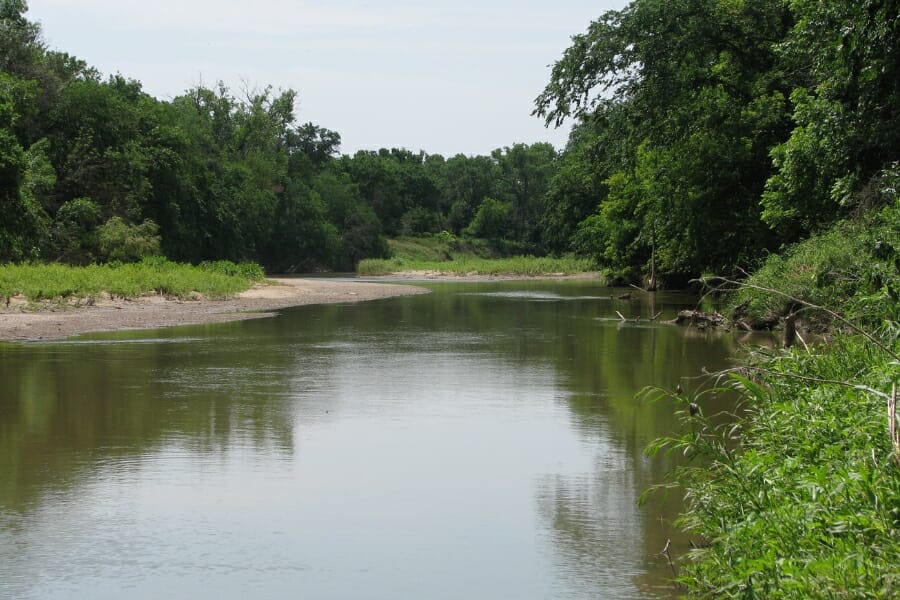
The Smoky Hill River flows through Kansas beautifully, showing off the state’s varied geology and green landscapes. Over time, the flow of this critical river has uncovered and shown off many geological treasures that were hidden beneath it.
As the seasons change and the water level rises and falls, the Smoky Hill River constantly changes the shape of its banks, exposing new layers of sediment. These changes make it easier for people with good eyes to find agates.
Aside from the minerals that might be found, the beautiful setting of the river adds to the excitement of rockhounding by combining the thrill of discovery with the peace of nature.
Where we found agates in the Smoky Hill River
With its bends, shallow spots, and gravelly banks, the river’s natural path is a great place to find these interesting stones with bands. The outer curves of river bends tend to experience more significant erosion. Faster-moving water can expose new rocks and minerals, making these locations potentially fruitful for agates.
Other Great Places To Find Agates in Kansas
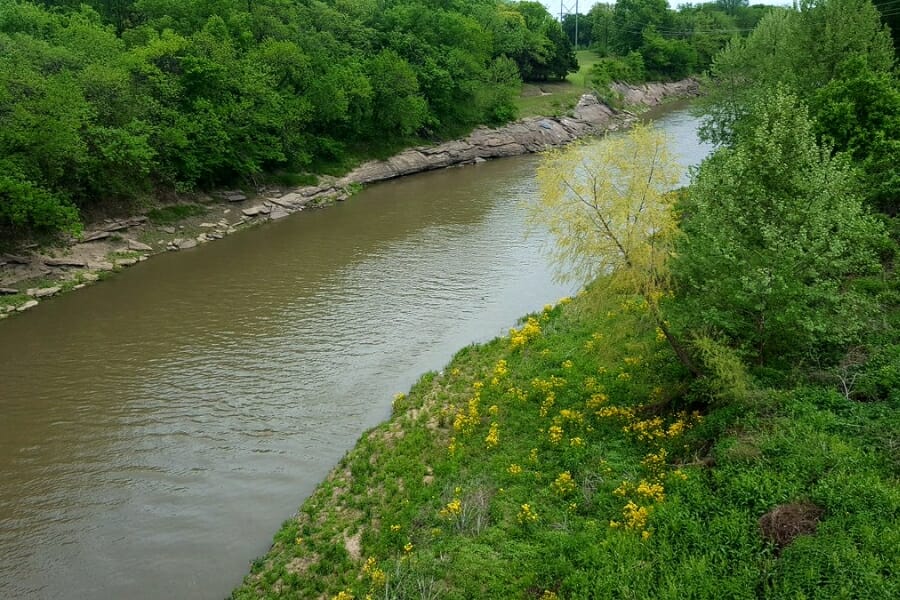
After telling you where the best places are to look for agates in Kansas, we’ll tell you where else you can go hunting. We put them in order by county to help you.
Our recommendations by county
| County | Location |
| Barber | Aetna area draws and washes |
| Barber | Medicine Lodge |
| Clark | Bluff Creek |
| Clark/td> | Mount Casino |
| Cloud | Old River Bed |
| Jefferson | Glacial moraines and gravel drifts |
| Logan | Smoky Hill River |
| Shawnee | In glacial moraines near Topeka city |
| Sheridan | Saline River |
| Wilson | Verdigris River |
Additional areas you can find agates
We want you to be successful in your search since Kansas is a big state. Here are some more specific places where you can spot agate specimens.
Rivers and riverbanks
Rivers and their banks move many minerals, including agates, from one place to another. As water flows through landscapes, it wears away the land and brings up hidden gems from the ground. These gems are then carried downstream.
Over thousands of years, these waterways have acted as nature’s tumblers, smoothing and polishing rocks. This makes the bands on agates look more attractive. Especially when the water level is low, riverbanks show piles of sediment and gravel.
Streams and creeks
Streams and creeks are great places to look for agates because they move slowly and are connected to the land. Smaller rivers and streams often cut through different rock formations, exposing minerals like the sought-after agates.
As streams and creeks meander, they keep revealing new layers of the earth. This gives collectors a chance to look at new things. Erosion and water flow in these channels help to separate and concentrate the heavier minerals, making it easier for a sharp-eyed hunter to find agates.
Washes and ravines
Washes and ravines, natural paths shaped by water and time, are good places to look for agates. These geological formations are caused by regular water flows, often caused by rain or melting snow.
These water flows act as natural sieves, catching and concentrating mineral treasures. Gems like agates, which have distinct bands and are see-through, can be found in these channels. As water flows through and drains from an area, it wears away the land and often reveals mineral-rich layers that were previously hidden.
Common Agate-Hunting Questions
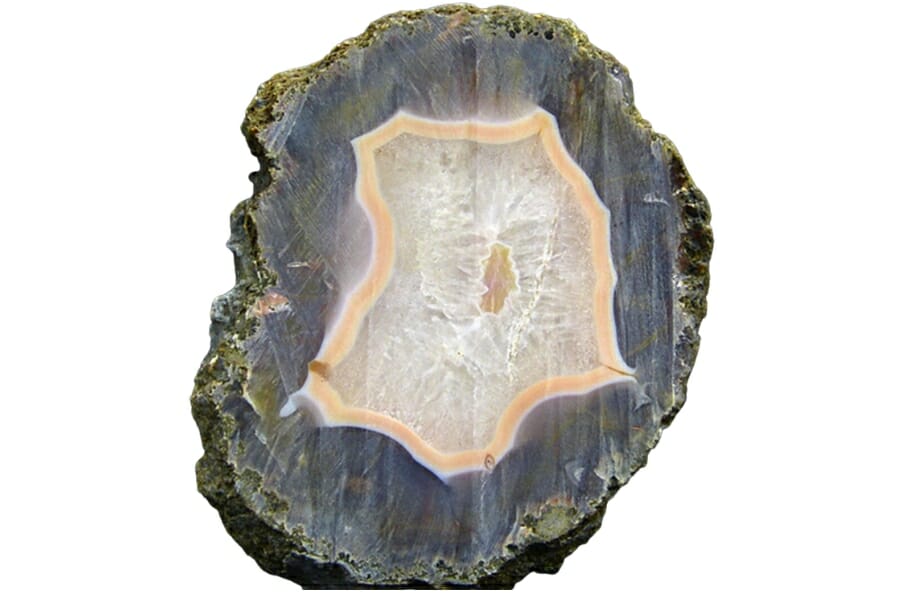
When people go to Kansas to look for agates, they often ask the questions below, and knowing the answers is important.
Is it illegal to collect agate in Kansas?
Kansas is a great place to look for agates if you know what you’re doing. In public places, it’s best to follow the rules. Get permission to go on private land before you start collecting specimens.
The Best Places To Buy Agates In Kansas

Not all people who hunt for agates like to spend all day outside looking for rocks. Sometimes, you only need a pretty agate to display or add to your collection. Here are some places in Kansas where you can buy agate crystals.
- Abundance Crystals – 1908 W 13th St N, Wichita, KS 67203
- Crescent Springs – 7327 W 80th St, Overland Park, KS 66204
- Down to Earth Co. – 1123 E Douglas Ave, Wichita, KS 67211
- Earthrocks LLC – 623 Coffeyville Ave, Independence, KS 67301
- Summit Step’s Minerals – 806 Massachusetts St, Lawrence, KS 66044
If you have any recommendations for our list please leave a comment below!

